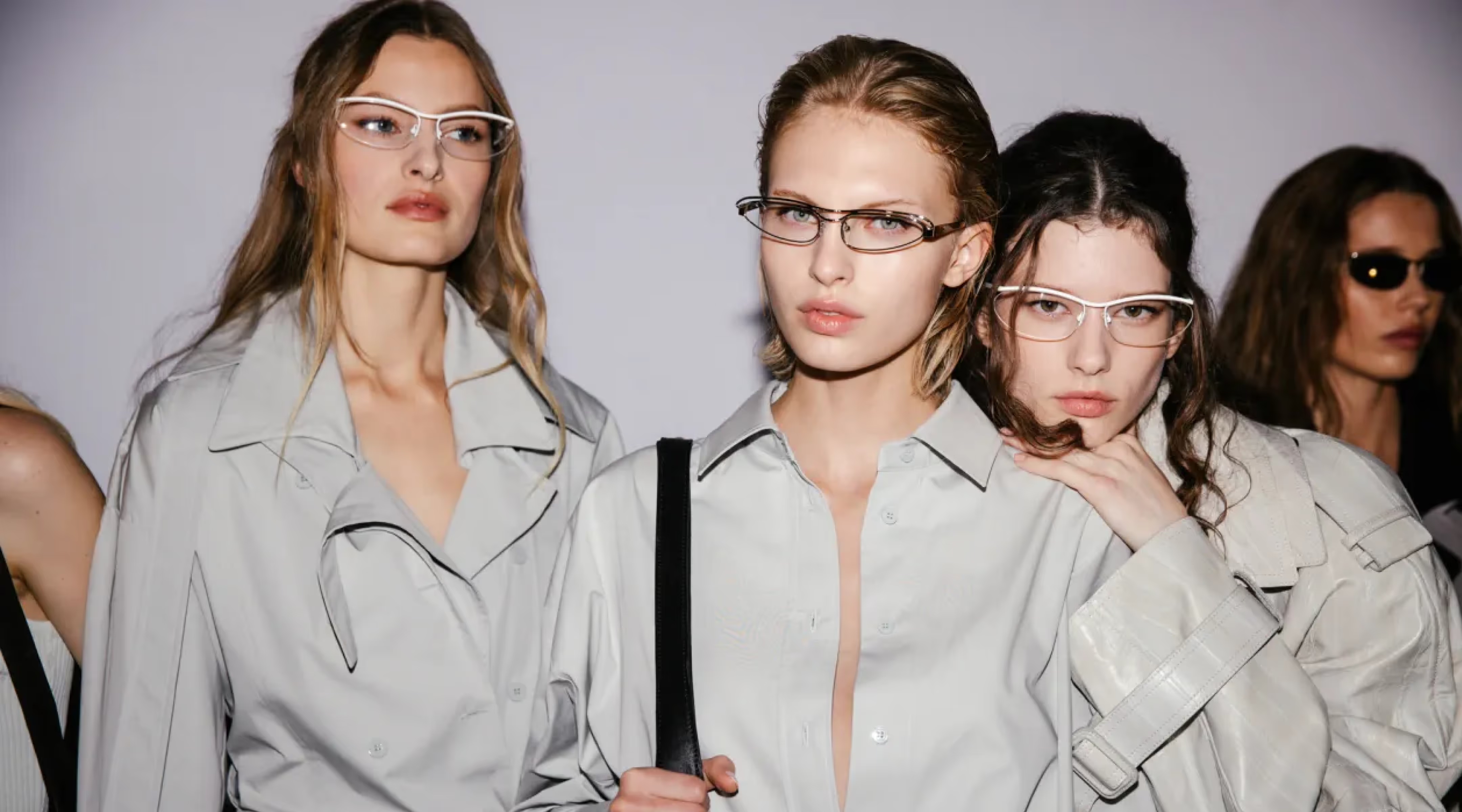
Fabric, form, and function; menswear was not playing around this season - conceptually, that is. Stripped of overly derived meaning or performance, most show themes landed on either summer in the city, a stylized exotic vacation, or the merging of the two. A sway toward traditional hot-weather dressing for regions like India and Dubai was met alongside a fresh, almost juvenile dandyism, a possible offshoot from this year’s Met Gala theme.
Discover the key influences, runway moments, and the top five trends that shaped Menswear Spring Summer 2026.
Menswear at large
Amid luxury’s slowdown, the global menswear market, while trailing womenswear in terms of revenue, is on the up, according to Statista. The global revenue is currently US$590.51bn, with the market projected to experience an annual growth rate of 2.72% with an average of 5 clothing purchases per person. Europe alone is expected to reach 8.7 pieces per person in 2025.
Could this bode well for luxury menswear? It’s possible - menswear shoppers are now more selective, more fashionably aware, and more tuned in to the outfitting of their favourite celebrities. High-profile sports and their most bankable players are leading the charge for men's revived interest in fashion, where clothes aren’t bought out of need, but out of an affinity with a brand, a trend, or an ambassador. Think the NBA’s ‘tunnel fits’, Lewis Hamilton and the F1-LVMH partnership, Italian tennis star Jannik Sinner and Gucci, and Jonathan Anderson selecting Kylian Mbappé - widely regarded as one of the world’s best football players - as the face of the Dior Homme. Mbappé’s 32 million followers, fashion-conscious or not, will now have some awareness of the Dior logo.
Bruno Cucinelli, arguably one of the most successful luxury menswear brands at present, echoed this idea of appealing to the everyman with wearable fashion during his SS26 presentation in Milan. He said that fashion week brands, “are aiming for the small percentage of super fashionable men, which is around 15 to 20 percent globally. More effort should be made to dress the 80 percent of men that are not fashionistas.”
A shift in male interest toward aesthetics, fitness, and self-care has revolutionized the market, with menswear shoppers taking a more high-low approach to their wardrobes. And as the Gen-Z and millennial market prioritizes technology and trends, it’s now up to brands to capture them with value for money, and high relevancy - to be the ones selling those five to eight pieces.
Unsure how to commit to directional product without overbuying? This piece on scenario modelling for retailers will show you how merchandisers are testing the waters before diving in.
On the runway
The menswear shows and presentations offered strong execution with an overwhelming sense of lightness, elegance, and comfort in clothing. This was evident in Anthony Vaccarello’s choice to host his Saint Laurent presentation during the afternoon instead of the usual 8pm slot, Dolce & Gabbana’s pajama parade, and Prada’s active decision to focus on clothing, not concept.
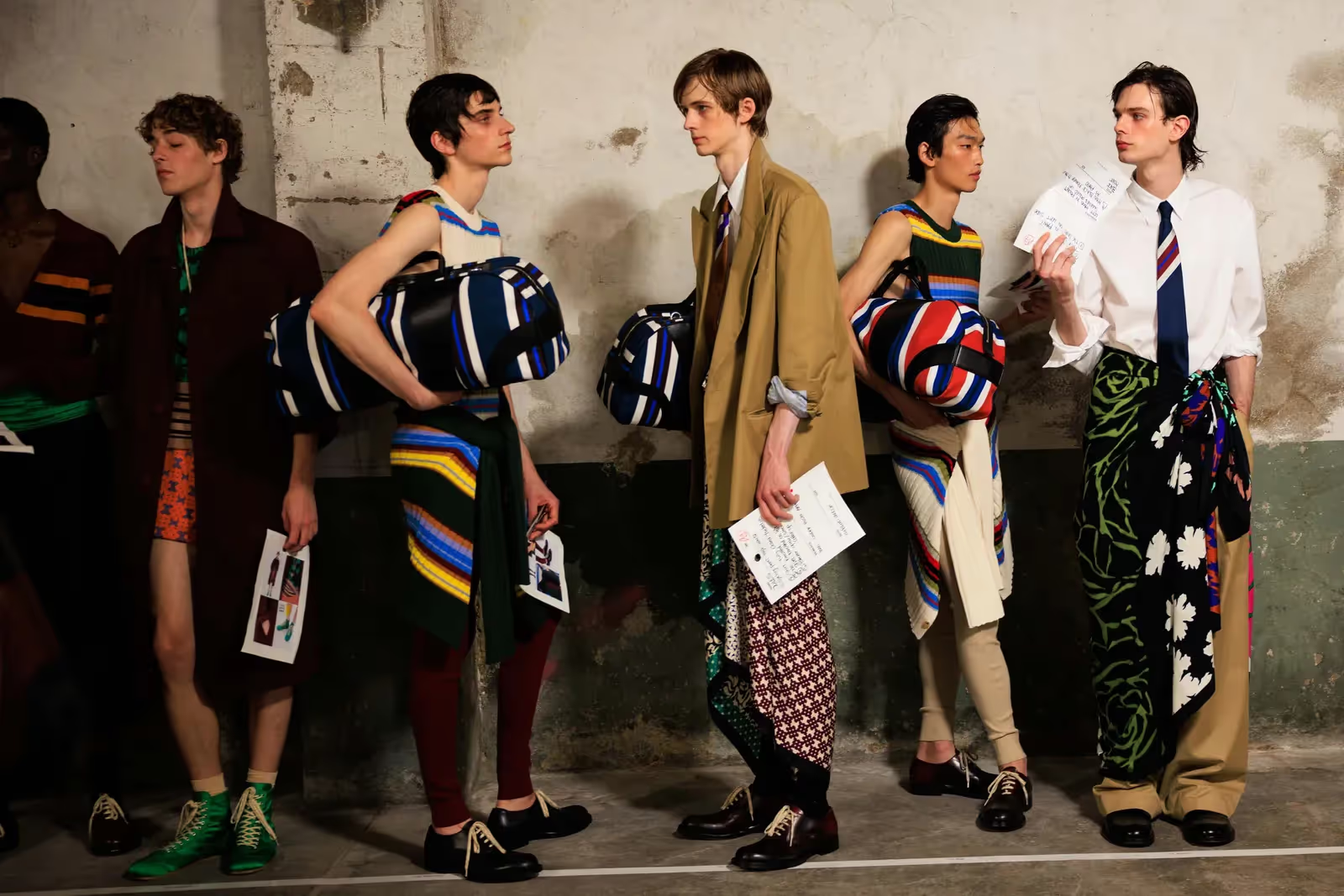
Cotton poplin shirting, casual matching sets, rolled-up suit jacket sleeves, light technical blousons and bombers, flip flops, loose neck-ties and boat shoes all spoke to summer dressing of the future - the hot future. An elegant consideration of the heat (and the rain that follows) came alive at Dries Van Noten, Hermès, Lemaire, Saint Laurent, and Zegna, where airy, draped fabrics were prominent, shorts were abundant, and the light sheen of sweat from the heat wave engulfing Paris was the perfect accessory. Moreover, designers and brands looked to create wardrobe-building pieces and complete looks to appeal to a broader sense of personal outfitting, style, and expression.
The debutantes
We’re beginning to see how fashion’s new era will take shape with the highly anticipated debut of Jonathan Anderson at Dior, where the former Loewe designer merged his signature boyish charm and wit with 18th-century French aristocracy. The results were captivating and well-received; conceptual cargo shorts, preppy cable knits, summery denim and shirts with skewiff ties and collars met bejewelled waistcoats and impeccably tailored blazers. It will be interesting to see how quickly Dior’s current menswear customers pick up on the new codes, post the refined and effeminate silhouettes Kim Jones spent seven years cultivating.
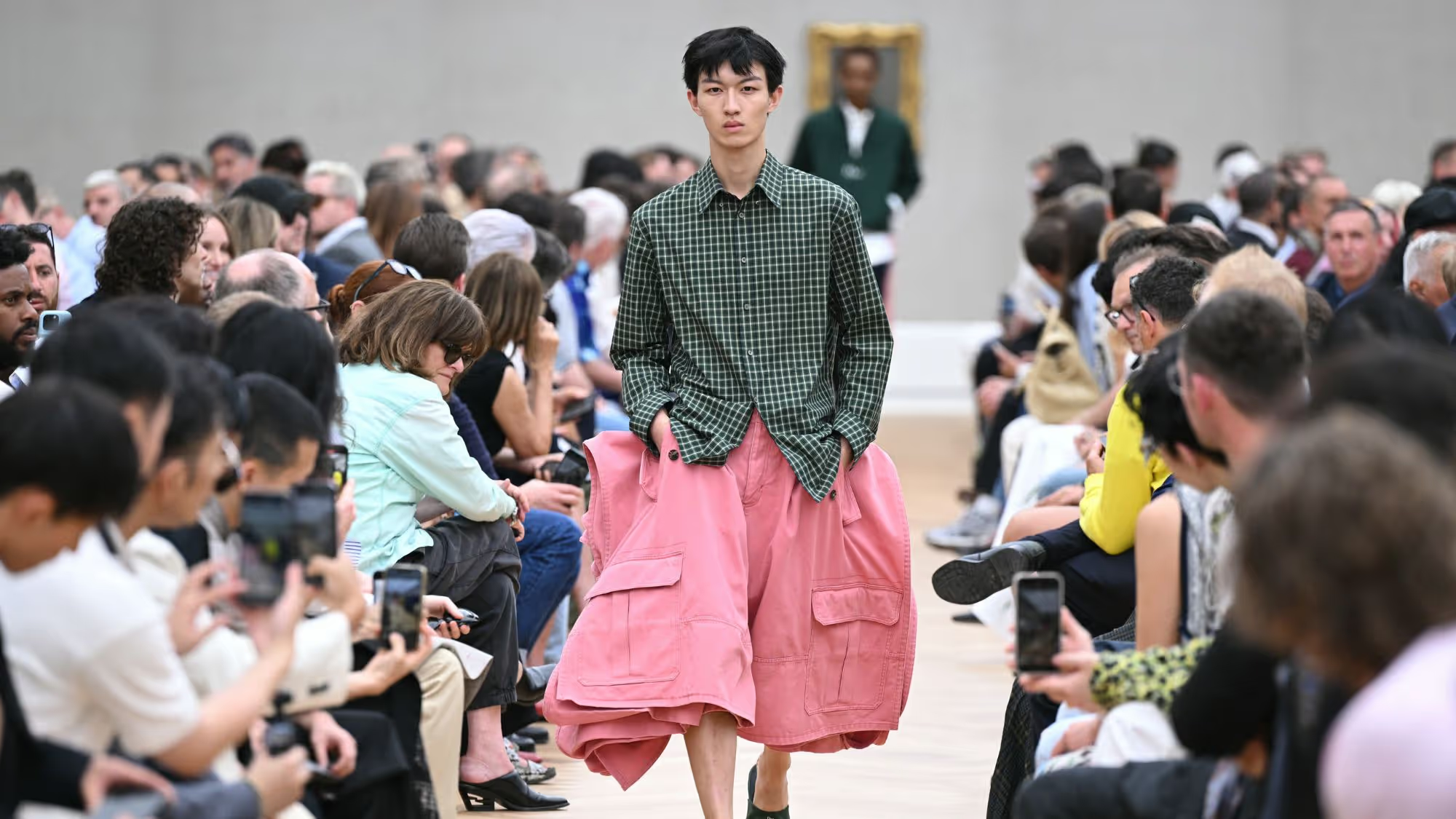
Dries Van Noten is a brand renowned for its ability to sell its artisanal clothing (as opposed to just bags and footwear), with a cult following that buys into that eclectic Dries story. Therefore, it was a spectacularly smart move for Julian Klausner during his debut for the brand to stick to the Dries blueprint and add relevance for a new generation of consumers. After all, it’s the customers, not the critics, that move the needle.
So, how can brands and retailers capture their customers when this season hits the floor the next summer? The smartest buyers are now using AI to predict customer trends and behaviour at scale. This is how leading brands are closing the gap between creative vision and commercial success.
The trends
City utility
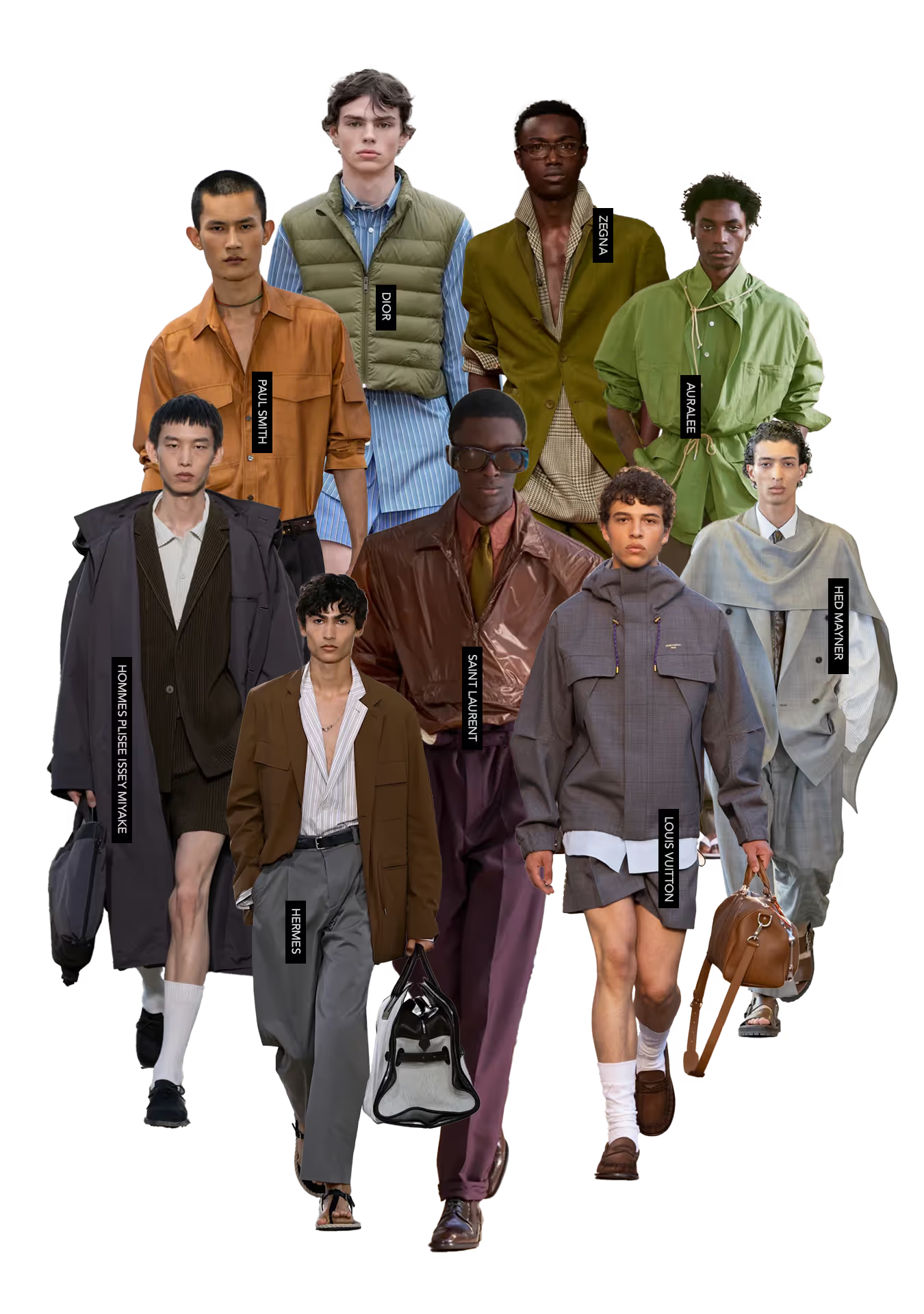
Speaking of the heat, it appeared the hybrid-working wardrobe had taken on the more gorpy elements of the men’s weekend wardrobe, which looked built to survive any way the weather turned. This city-to-trail style of modern utility fused work jackets and technical blousons with suit pants, tailored shorts, and ties. Looks were often finished with summer sandals or flip-flops. Prada perched rolled-up suit jackets over slimline tracksuits with backpacks, while Saint Laurent’s sheer, technical shirting looked perfect for “work from holiday” scenarios. Hermès got creative with its leather codes, offering perforated leather pants and jackets to keep cool.
Spice rack
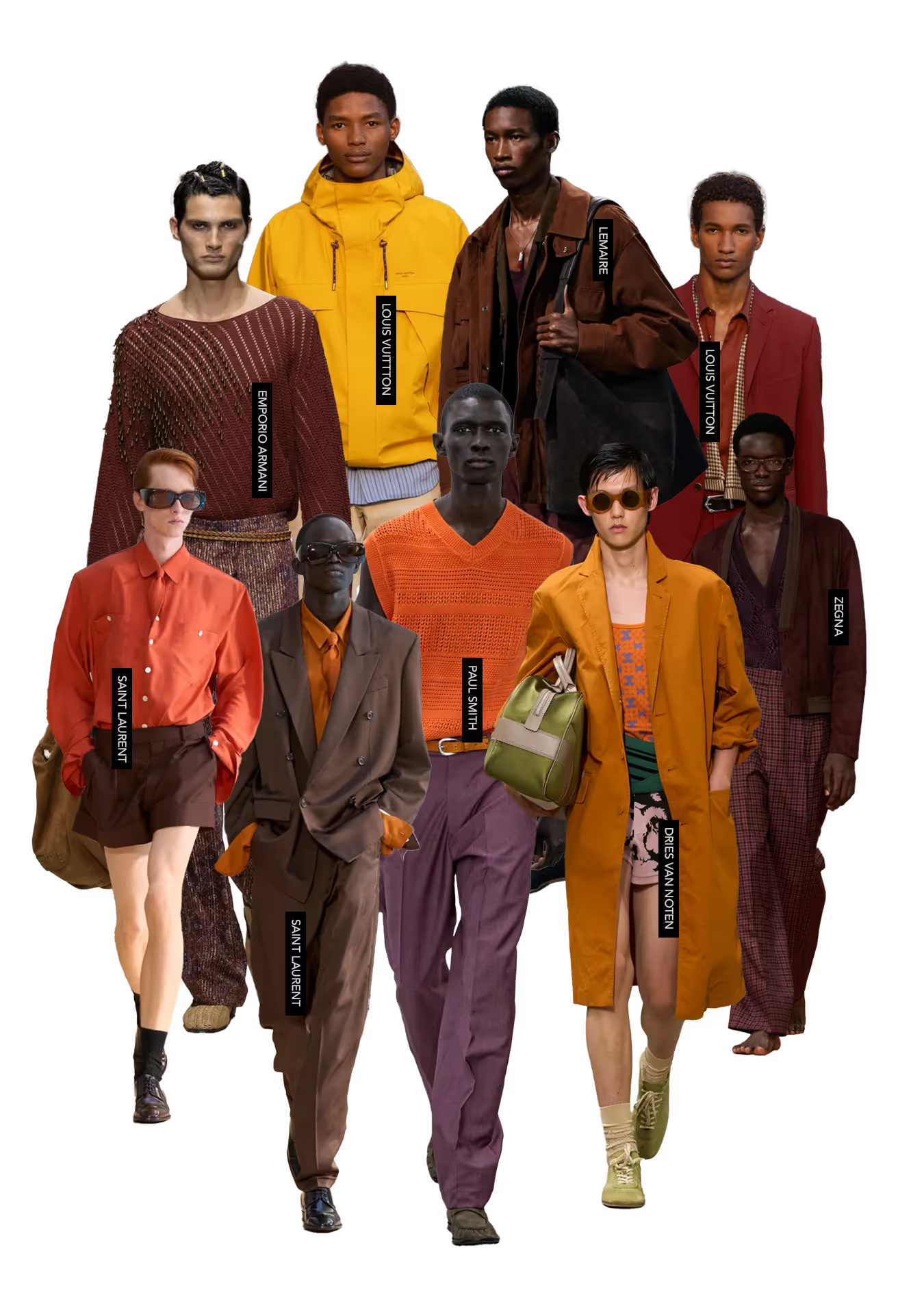
Warm, rich, and vibrant tones of spice permeated the collections with a luxury sensibility, especially those with a far-flung state of mind. Cinnamon, chilli, and paprika were popular, as well as saffron and mustard tones, paired with soft, earthy neutrals, khaki greens, and lighter shades of peach. Saint Laurent was a key example of this colour wheel, pairing unlikely tailoring combinations of oranges, browns, and yellows to execute a painterly, 80s-inspired collection.
80s tailoring
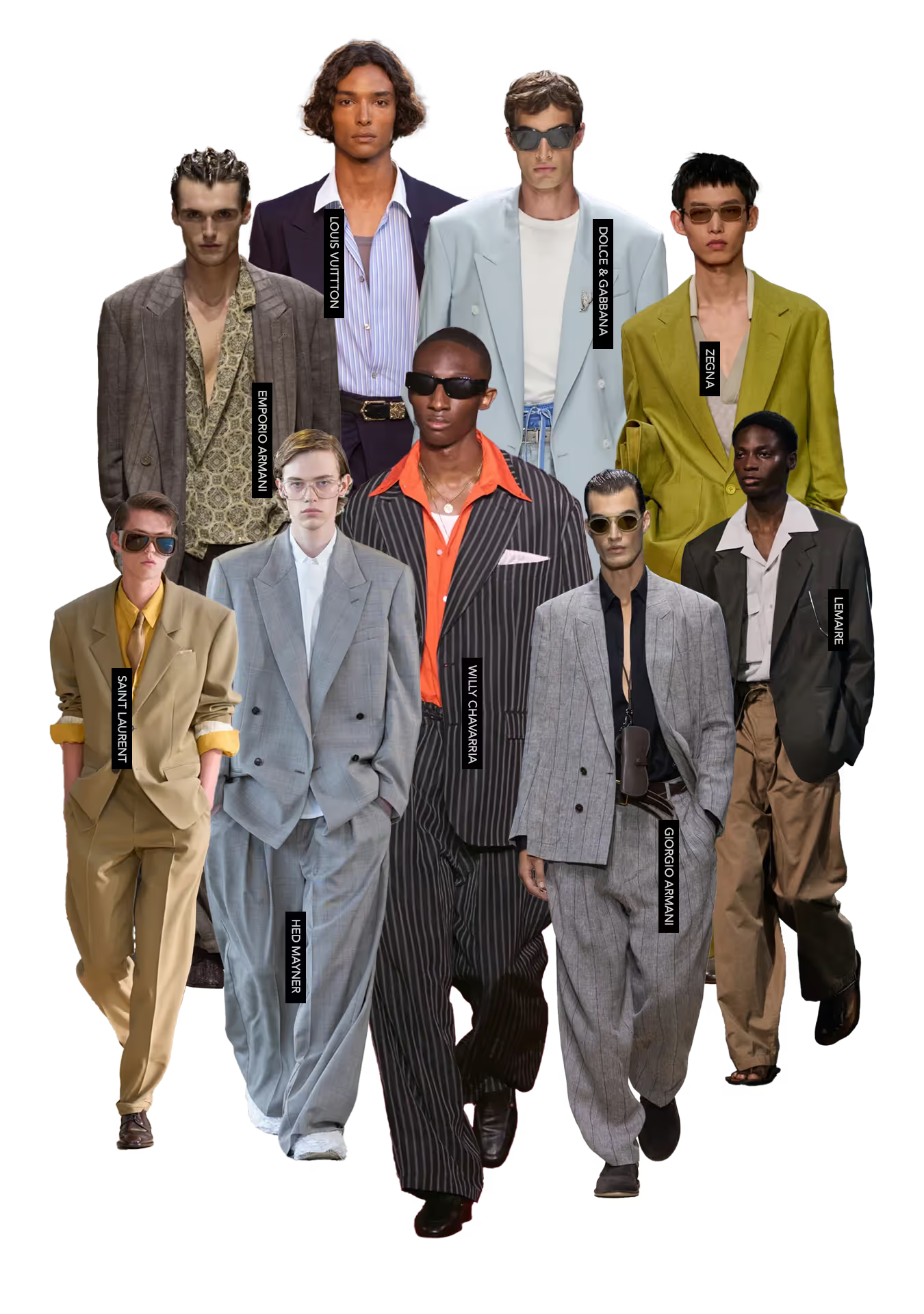
Soft, easy tailoring spoke again to the flexible wardrobe of now, with the signature suave of 80s boardroom suiting. Think Richard Gere in American Gigolo; wide double-breasted jackets, draped blazers, and louche suit pants paired with easy crew neck t-shirts or loud, large collared shirts.
Set dressing
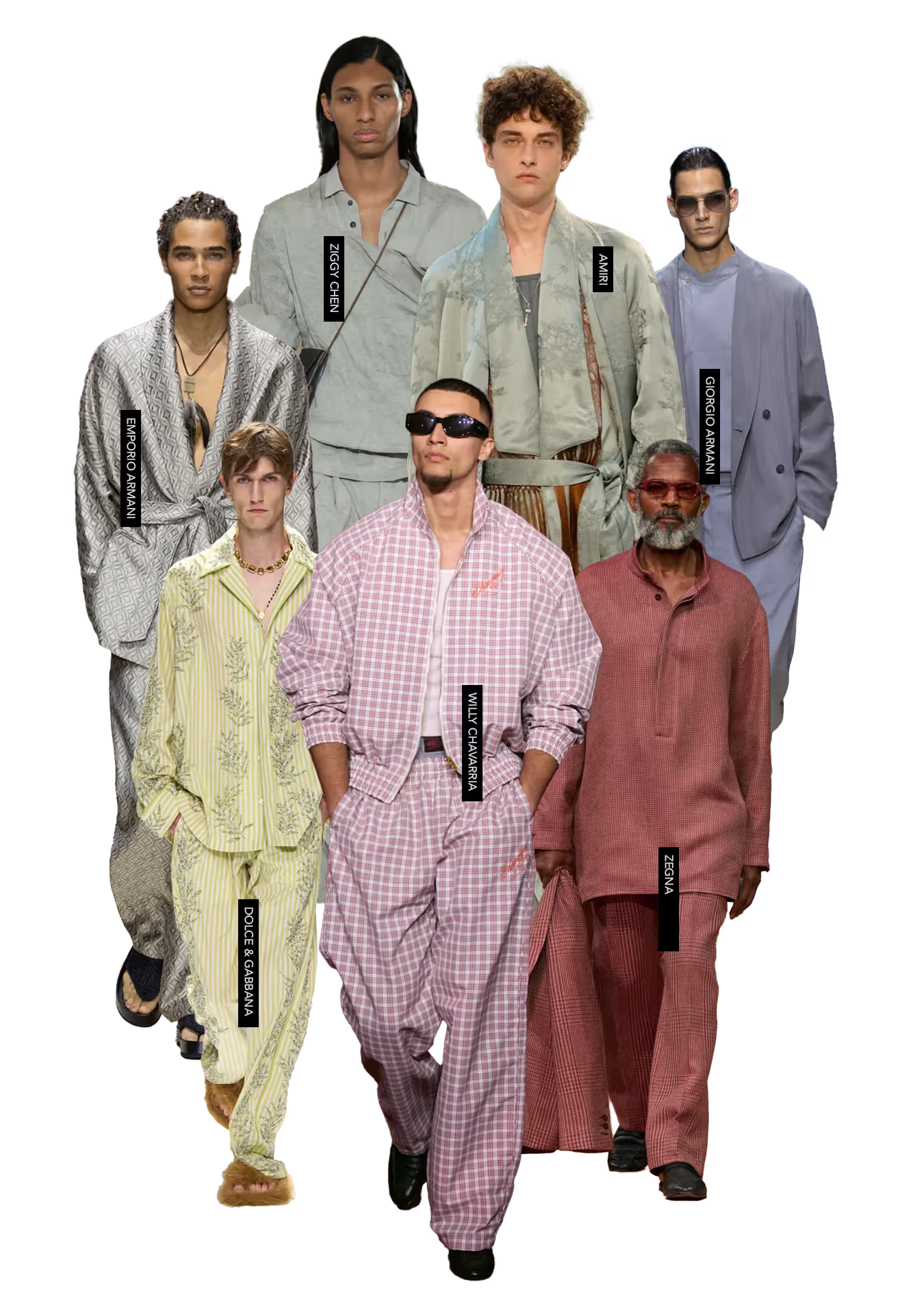
Whether designed for vacation or elevated casualwear, dressing in matching sets took over the summer runways, especially at Emporio and Giorgio Armani. According to Statista, the popularity of traditional Indian kurta-pajamas and sherwanis is on the rise in India, a look that Zegna (among others) effortlessly leaned into at its Dubai show, with sets crafted from ultra-light yarns blending recyclable paper cellulose, silk, and linen. Dolce & Gabbana took a more literal approach to pyjama dressing with sets crafted from breezy cotton poplin to bridge the items into suitable summer streetwear. Others built full looks with either technical, lightweight, or softly tailored jackets to be paired with matching trousers.
Tie one on
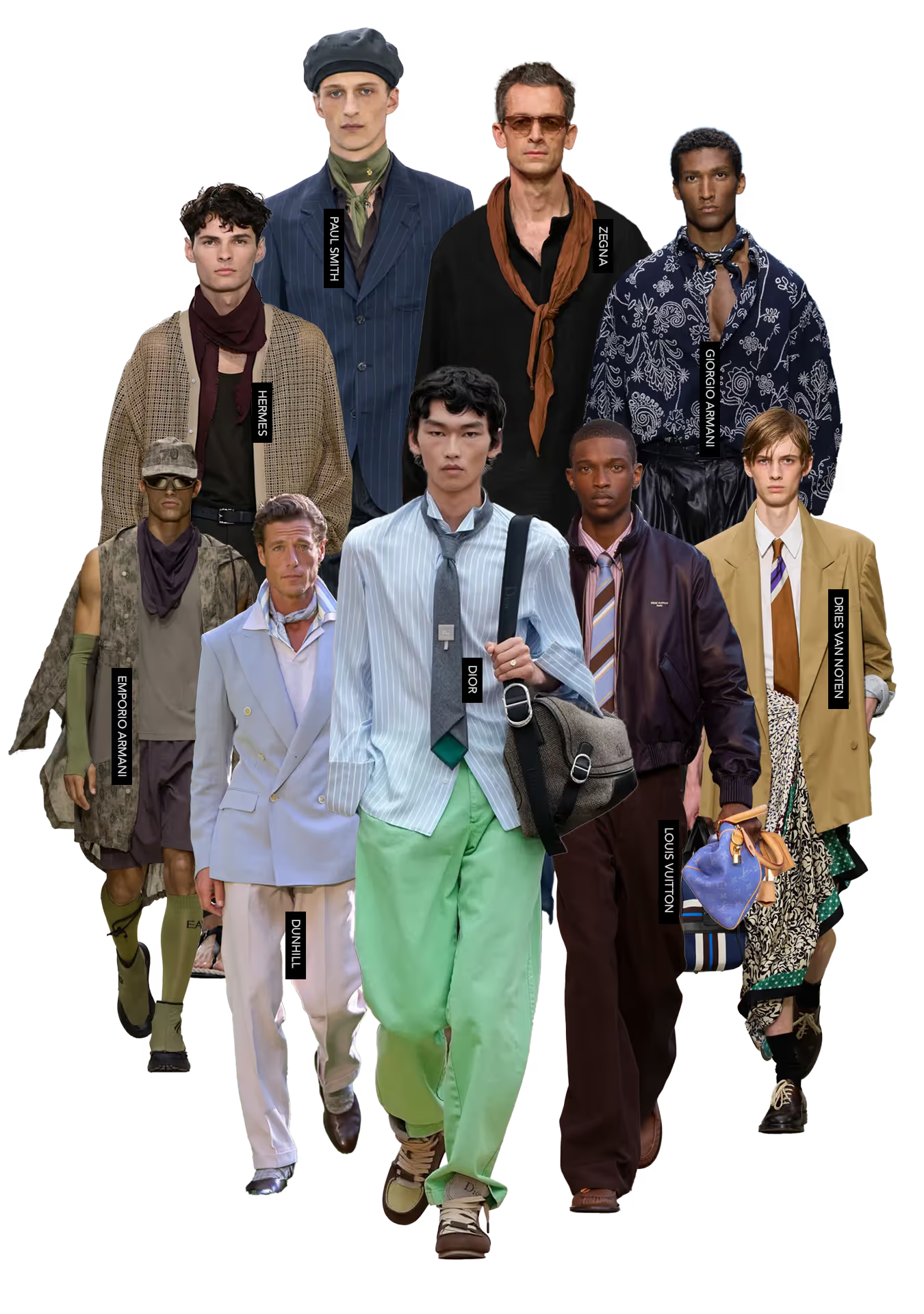
Cravats, collars, scarves, and ties - the dandyism was at play in all things neck-focused. The humble shirt and tie were back, unmistakable throughout the collections, whether in their traditional sense or as fashion statements. Dries Van Noten’s ties were in great contrast to long, printed sarongs, Dior went for backward schoolboy ties and removable French collars, while the loosely hanging ties at Zegna and Armani had a seasoned traveller-meets-bohemian edge.
Want to turn these trends into sell-through?
Explore 7 proven merchandising strategies to protect margin and plan confidently, even in unpredictable retail conditions. Read the strategies here.



.avif)
